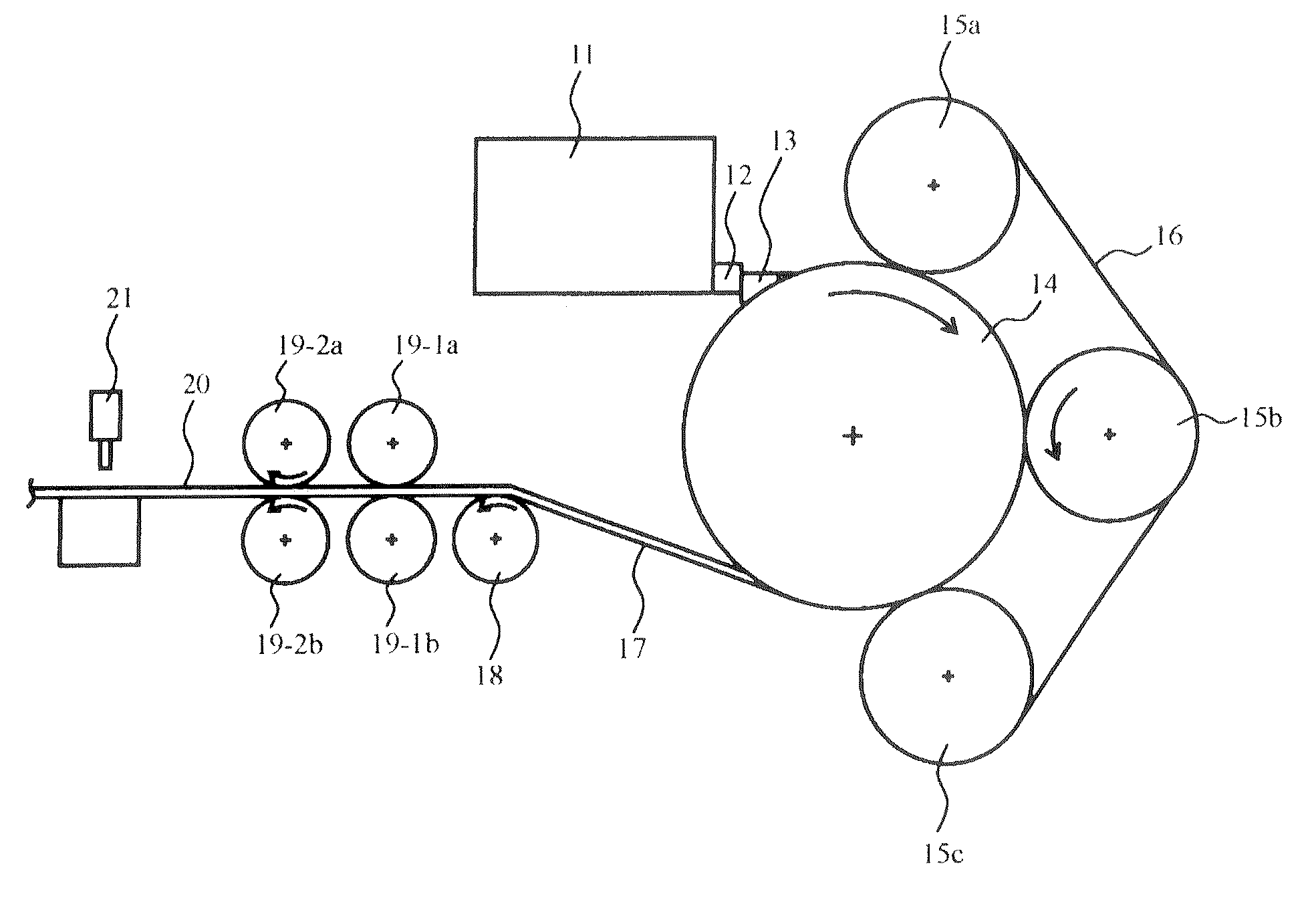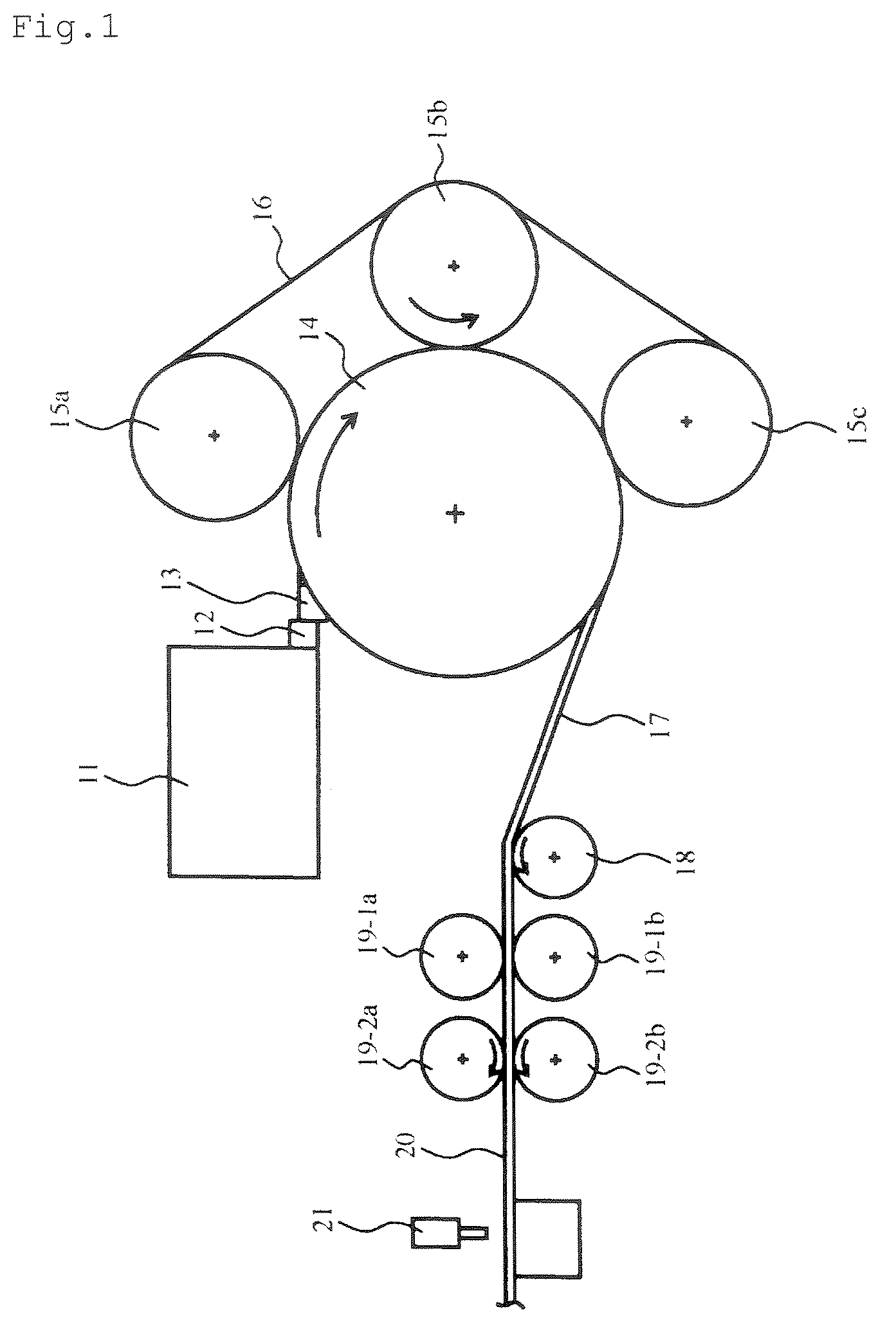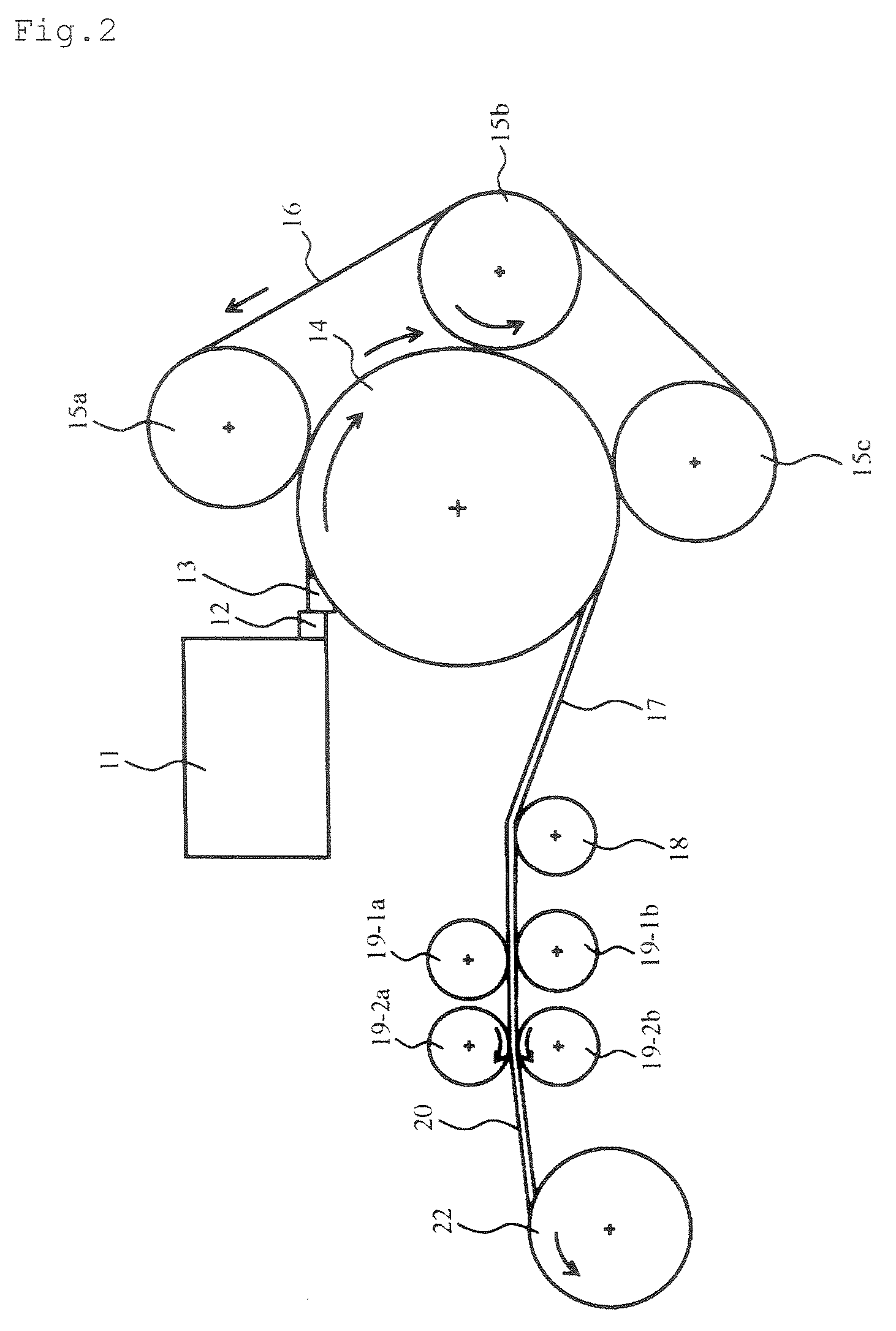Method for producing manganese dry cell negative electrode zinc material
a technology of dry cell and negative electrode, which is applied in the direction of primary cell electrode, cell components, electrical equipment, etc., to achieve the effect of reliable quality of non-lead-added anode zin
- Summary
- Abstract
- Description
- Claims
- Application Information
AI Technical Summary
Benefits of technology
Problems solved by technology
Method used
Image
Examples
embodiment example
[0060]Alloy composition: 100 kg pure zinc and different additives for the embodiment examples 1 to 9 and the comparative examples 1 and 2 as indicated in the Table 1 herein below. Manufacturing system as of Drawing 2 equipped with 100 cm diameter disc.
Disc diameter: 100 cm
Molten zinc alloy temperature in the mold: 450° C.
Thickness of molded zinc alloy material: 15 mm
Cooling water temperature: 32° C.
Temperature of the molded zinc alloy material on entering to the rolling system: 110° C.
Number of twin roller: 2 pairs
[0061]A test was conducted on the zinc pellets punched out of the zinc sheet made by foregoing method to verify if they are useable without quality problems.
[0062]A number of R20 manganese dry batteries were fabricated using above-mentioned zinc pellets and evaluation was done on the batteries.
[0063]First cathode compound was prepared by dry mixing of cathode active material, manganese dioxide for major ingredient, and acetylene black for conductive material, followed by s...
embodiment example 16 to 20
Alloy compound: 100 kg pure zinc, additive 0.3 mass % bismuth
Manufacturing system: FIG. 2
Varied temperature for molten zinc alloy in the mold
Casting machine disc diameter: 100 cm
Thickness of molded zinc band at casting machine exit: 15 mm
Cooling water temperature: 32° C.
Zinc band temperature on entering to rolling system: 110° C.
Number of rolling twin roller: 2 pairs
[0085]
TABLE 3MoltenBreakageCrystal conditionCrackzincofof zinc band atof zincalloyzinc bandcasting machinesheet aftertemperatureat castingexitrollinginmachine(rate of acicular(excellent,moldexitcrystal)good,(° C.)(%)(%)pass, failureEmbodiment300012passexample 16Embodiment40009goodexample 17Embodiment50004excellentexample 18Embodiment60008goodexample 19Embodiment700010passexample 20
[0086]From above-mentioned test, 400 to 600° C. turned out to be the most preferable temperature of the molten zinc alloy in the mold.
embodiment example 21 to 25
Alloy compound: 100 kg pure zinc, additive 0.3 mass % bismuth
Manufacturing system: FIG. 2
Varied cooling water temperature
Casting machine disc diameter: 100 cm
Molded zinc band thickness at casting machine exit: 15 mm
Molten zinc alloy temperature in mold: 450° C.
Molded zinc band temperature on entering to rolling system: 110° C.
Number of rolling twin roller: 2 pairs
[0087]
TABLE A4Breakage Crystal conditionCrackofof zinc band atof zinczinc bandcasting machinesheet afterCoolingat castingexitrollingwatermachine(rate of acicular(excellent,temperatureexitcrystal)good,(° C.)(%)(%)pass, failureEmbodiment1007goodexample 21Embodiment2003excellentexample 22Embodiment3004excellentexample 23Embodiment4008goodexample 24Embodiment50012passexample 25
[0088]From the test result, a temperature lower than 40° C. turned out to be suitable for cooling water.
Optimum Temperature for Molded State Band-Form Material on Entering to Rolling System
PUM
| Property | Measurement | Unit |
|---|---|---|
| temperature | aaaaa | aaaaa |
| temperature | aaaaa | aaaaa |
| temperature | aaaaa | aaaaa |
Abstract
Description
Claims
Application Information
 Login to View More
Login to View More - R&D
- Intellectual Property
- Life Sciences
- Materials
- Tech Scout
- Unparalleled Data Quality
- Higher Quality Content
- 60% Fewer Hallucinations
Browse by: Latest US Patents, China's latest patents, Technical Efficacy Thesaurus, Application Domain, Technology Topic, Popular Technical Reports.
© 2025 PatSnap. All rights reserved.Legal|Privacy policy|Modern Slavery Act Transparency Statement|Sitemap|About US| Contact US: help@patsnap.com



